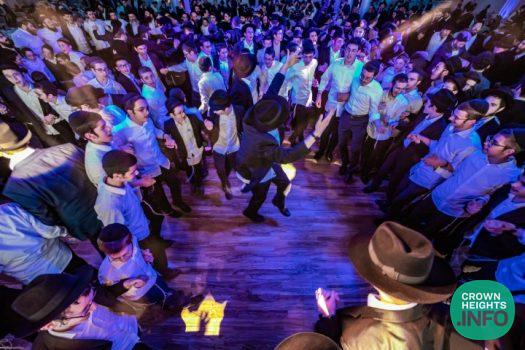
Weekly Dvar Torah: The Joy of Returning Home
As we embark on the next part of the High Holidays, we are reminded of a profound moment after Yom Kippur, the Frierdiker Rebbe, asked his father, the Rebbe Rashab, what needed to be done the day after Yom Kippur. His father responded, “Only now must we truly do Teshuva—we must return to G-d, to our source, to ourselves.”
But isn’t that puzzling? Didn’t we just complete a forty-day journey of repentance, filled with prayer and tears, uniting with G-d? What does it mean to return once more? Are we to repeat Yom Kippur’s fasting and introspection?
Not at all! Upon completing the Yom Kippur services, we joyfully exclaimed, “Gut Yomtov!”—a declaration of celebration. We now enter Zman-Simchaseinu, the time of our rejoicing.
This part of the season doesn’t echo the solemnity of Yom Kippur; instead, it bursts forth with joy and festivity! Having stood in awe of G-d’s greatness, crowned Him as our King, and stirred His compassion, we are now united as one family, ready to celebrate.
Imagine the thrill of a long-lost child returning home—the joy shared between parent and child is beyond words. In this spirit of joy, we extend our blessings to all nations, praying for a sweet and healthy year ahead. When we are happy, we wish for happiness to envelop everyone around us.
So, as we enter this joyous period, we understand that while the tone shifts from awe to celebration, the essence remains unchanged. The High Holidays are only beginning, and Zman-Simchaseinu is the time of OUR rejoicing. We rejoice with our father, Hashem, who rejoices with us, His returning children
Interestingly, the way we express our joy during this season is by dancing as we pour water—not wine—during the celebrations. Wine, a flavorful drink, elevates our spirits and sets the stage for dancing, while water, plain and simple, reminds us of life’s basic sustenance. This represents a celebration of the simple, everyday blessings that G-d bestows upon us.
On Sukkot, we recognize that our daily survival is a gift from G-d. This pure joy comes from our very existence—no deep analysis is needed. We simply celebrate being alive, and G-d rejoices alongside us.
It’s party time! Let’s embrace this special opportunity to be genuinely happy. Whether it’s dancing to good music, attending a lively party, or participating in a Chassidic Farbrengen, seize the moments that make you happy to be a Jew.
A beautiful story illustrates this joy. Some ten years ago, a man named Serge, dressed impeccably and holding a pipe, entered the Chabad House in Basel to purchase the four species for Sukkot. He seemed troubled and quietly asked, “May I enter the sukkah? I am a sinner.” His words surprised Rabbi Vishecki, the Shliach, for in Judaism, no one is defined solely by their past mistakes.
As they sat together, Serge shared his journey—born to a Jewish mother and a non-Jewish father, raised in a home disconnected from Judaism. Despite his upbringing, his soul yearned for connection. At twelve, he sought help at a synagogue, only to be forbidden by his mother. Years later, he became a Protestant pastor but felt an emptiness within.
His turning point came during a trip to Israel, where he found himself at the Western Wall, sobbing and pleading for G-d’s acceptance. After returning to Switzerland, he sought out Judaism and began praying with Tefillin, embracing his Jewish identity.
This reflection beautifully captures the essence of Zman-Simchaseinu—the time of our rejoicing—and the way it centers around simple joy, unity, and the deeper meanings of the Arava. It’s fascinating how the Arava, symbolizing the “simple Jew,” connects us to the essence of G-d. This profound insight emphasizes that all Jews, regardless of their external qualities, are integral to the Jewish nation and the fulfillment of G-d’s will. The story of the Arava, which appears to be the least significant externally, yet holds so much depth, mirrors the hidden beauty of simplicity and faith.
Serge’s story reflects the truth that every soul has immense value, and it requires a discerning eye to recognize it. As we celebrate Zman-Simchaseinu, let us appreciate and rejoice with our fellow gems—each Jew, a diamond in their own right. Together, let’s dance in love and brotherhood.
Inclusivity is at the heart of Sukkos. The four species—representing different types of Jews—must be held together for the mitzvah to be fulfilled, underscoring that each Jew, regardless of their level of observance or knowledge, is essential to the whole. The Succah itself is an all-encompassing space, welcoming everyone in, with no distinction between “important” and “less important” people. In our daily lives, this teaches us to value every individual, to recognize that everyone has something unique and valuable to contribute, and to seek unity. Whether it’s through communal activities, acts of kindness, or simply sharing joy, we can apply this lesson by being inclusive and ensuring that no one feels left out.
L’Chaim to all the gems!
Have a unifying joyous Yomtov,
Gut Yomtov, Gut Shabbos
Rabbi Yosef Katzman













